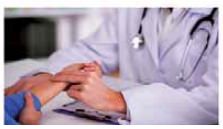Nursing - Pulse - Physical Examination | 11th Nursing : Chapter 5 : Nursing - Health Assessment and Physical Examination
Chapter: 11th Nursing : Chapter 5 : Nursing - Health Assessment and Physical Examination
Pulse - Physical Examination
Pulse
Pulse is the expansion felt in an
artery where it can be pressed against a bone
Sites
Radial:
It is felt with two or three fingers lightly
placed on the thumb side of the wrist, anterior surface.
Carotid: This is felt in the neck beside the larynx.
Temporal: It is felt in front of the ear.
Facial: Near the angle of the lower jaw.
Femoral: Felt in the groin
Anterior Fontanel: An infant’s pulse may be felt at the ‘soft spot’ on his head
Observation of the pulse
1.
Rate – Number of pulse beat per minute
2.
Rhythm or Regularity
3.
Strength
Pulse rate
The normal pulse rates for persons
at rest are
Adults : 60 to 80 beats/minute
Children : 80 to 100 beats /minute
Infants : 100 to 140 beats /minute

Factors That Affect the Pulse Rate are
1.
Sex: The pulse rate of women is little higher than men
2.
Exercise: The rate increases with exercise and is slower when at
rest
3.
Emotion: Anger, fear, joy can increases the pulse rate
4.
Hunger and fatigue: decreases the pulse rate
5.
Drugs : some drugs increase, while others decrease the pulse
rate
6.
Acute pain causes an increase in pulse rate
7.
Low blood volume as in dehydration haemorrhage and shock, causes
an increase in pulse rate
8.
Heart
and thyroid diseases affect the pulse rate.
Tachycardia: Above 100 beats /
minute
Bradycardia: Below 60 beats
/minute
Taking And Recording The Pulse
The pulse is usually taken along
with the temperature. In some cases like after surgery accidents and heart
diseases the pulse rate has to be taken and recorded every 15 minutes.
Method
1.
See that the patient is in rest
2.
See that the patent’s arm is well supported
3.
Place the tips of three fingers (never the thumb) gently over
the radial artery at the wrist.
4.
Feel the pulsation carefully before starting the count note the
strength and regularity of the beats
5.
Using a watch with seconds hand or a pulse oxymeter, count the
number of beats for one minute. If necessary count longer to be sure and
accurate
6.
Record
the pulse rate and note any abnormality in strength or regularity on a JPR
chart the pulse rate is often marked in red.

Hand placement for pulse check
Related Topics